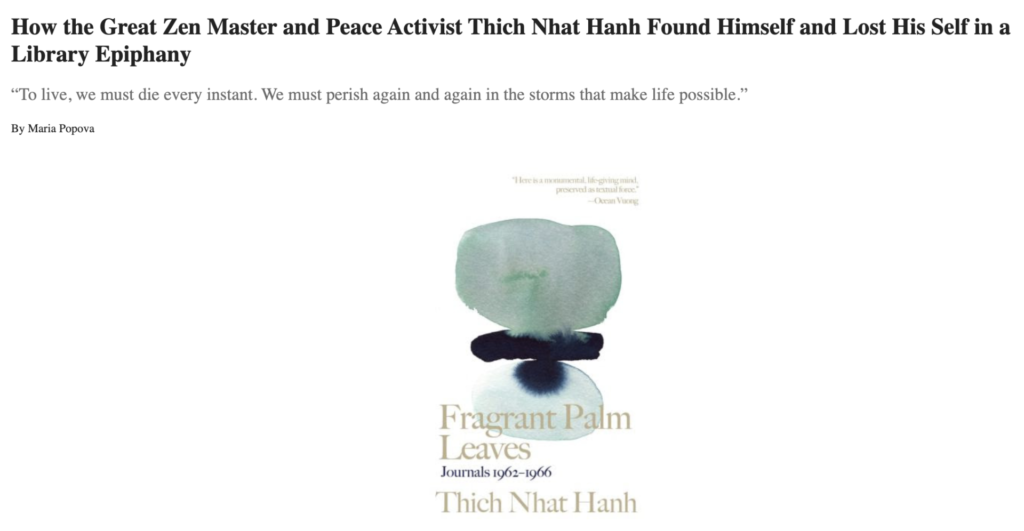Running Can Teach Us A Lot About Courage, Resilience, and Mindfulness
Facing challenges doesn’t mean you have to fight with yourself. Physician and ultrarunner Christiane Wolf shares how she uses mindfulness skills both on and off the trails to tame anxiety and uncover resilience. The post Running Can Teach Us...

One step at a time… This one. This one. This one. Another one. One more? Yes, I can do one more. This one, too.
This is how I overcame the hardest inclines of a recent trail race through the beautiful mountains around Los Angeles, my adopted home. The run was filled with substantial climbs, one of which was over three miles long. I’ve been running since my mid-20s— when it was mostly jogging around my neighborhood in order to be outside and to get some exercise. But over the last few years, I’ve ventured into running marathons and most recently I morphed into an ultrarunner: Somebody who runs distances longer than a marathon, usually on trails in nature, often in the mountains.
Because I practice and teach insight meditation and mindfulness, people automatically assume that I also practice mindful running. When they ask me about it, my answer is: “It depends!” And often also, half-jokingly: “I try not to!” Even though I love running, it can get strenuous, tedious, and boring, especially on long runs and races, and I usually prefer to be comfortable. I can completely relate to my running buddy who says that at times the best thing about running is when it’s over.
My own motto for running—and for life—is to have a well-stocked toolbox. This equips me to savor the great moments, persevere through the unpleasant ones, and even surprise myself with how determined and resilient I really am. Here are a few of the “tools” I’ve gathered on my journey with running—and, as I’ve discovered, this toolbox naturally applies to life’s other challenges too.
One Foot in Front of the Other
When things get really tough during a long run or a race, I keep asking myself the question: “Can you still take this one step?” “And this one?” “And what about this one?” I have found out that that one step is still possible, and then I restart the whole thing from the beginning. It is important to keep asking yourself the question honestly and not to let your mind drift toward the future: Yes, this one is still OK—but not 10 more miles!!
The hardest part of the run is putting on your running clothes in the morning and leaving the house.
I wrote my latest book during the pandemic. I repeatedly hit days and even weeks when I couldn’t get myself to write at all because the task before me appeared so insurmountable. Eventually, I pulled out another running lesson: The hardest part of the run is putting on your running clothes in the morning and leaving the house. So in the morning, I focused on opening the document on my laptop and setting a timer. My commitment was to write for 10 minutes and then stop, unless I wanted to do more. And just as with running, more often than not, after I started I was ready to keep going.
This “one step” practice can be transferred to any difficult life situation. No matter how challenging the moment seems, we’re already in it and enduring it. And even if something feels like it can’t be done right now, it will usually feel more bearable a couple minutes later. Until it changes yet again!
Be Strategic With Your Attention
Practicing mindfulness in daily life includes flexibility and receptivity, to be ready to respond, instead of reacting, to the present moment. This also benefits us while running.
To be fully in the moment while running is a wonderful thing, no question about it. There can be flow experiences and “runner’s highs.” It’s not that I don’t have moments like that, but they are just that: moments. A marathon, let alone an even longer distance—and the months of training it takes to get there—contains very many moments. So a bouquet of different strategies for the full range of experiences is asked for—for the beautiful, the boring, and especially the difficult moments.
Sometimes I am able to fully take in my surroundings, the beautiful landscape, the smell of damp earth and herbs. Other times, I have to place all of my attention on not stumbling over roots and stones, or cutting off my fellow runners. Pounding down a steep narrow path in the woods will focus your attention and “empty” your mind like nothing else.
On other runs, especially on familiar routes, there is a certain monotony in the foreground, during which a good playlist or an audio book are very welcome. While there are many runners who are mindful of their entire run—and they have my respect!—my strategy here is to focus on things other than the details of the run, especially a long one. Usually only when all of this can no longer distract me enough from the monotony or the increasing exertion and tired legs do I then concentrate fully on the present moment again.
It’s exactly this up and down and hard and easy that makes the journey so worthwhile.
Similarly, when I’m writing, there are hard moments that need all my attention and focus, and there are moments when I am in the flow of it and just enjoying the ride. And it’s exactly this up and down and hard and easy that makes the journey so worthwhile, especially when I finally hit a sweet spot after slogging through procrastination and writer’s block.
The Complaining Mind
During hard runs, and other trying situations, we reach a point where the mind and body just don’t want to go any further. We are evolutionarily programmed toward energy control and comfort. Full refrigerators and the ability to keep foods fresh longer are still very new to history. Our ancestors did well to stuff themselves when they had the chance as well as slowing their burning of those calories. They had no idea when the next meal was going to be caught or found. Our system is therefore calibrated not to simply squander energy. With very little exertion, the mind begins to whine: “This is too much! Too exhausting! No, that’s just not possible!” This whining becomes louder the greater the effort is or the longer it lasts.
David Goggins, author of the bestseller Can’t Hurt Me, trained by the US military and supposedly the fittest man in the world, says that if the mind is convinced that the body can absolutely go no further, then we have used up only 40% of our reserves. That’s how strongly we are programmed to preserve energy. On the other hand, by never leaving our comfort zone, we accept limitations about ourselves that may not actually be true. For example, a new study out of Cornell shows that personal growth is bigger in those who seek discomfort. So when the going gets tough, can we negotiate with our biological urge to call it quits?
The clearer we are about our intention, our “why,” the more we are willing and able to “embrace the suck” (a favorite phrase of many endurance athletes). While writing my book, I realized that the writing process is not unlike running an ultramarathon in the mountains. It pushed me out of my comfort zone more times than I care to admit, dealing with deadlines and self-doubt: Why am I doing this to myself? Isn’t there already enough out there on mindfulness and chronic pain? There is no end to this! In these moments I remembered lessons from the trails, for example that those frustrated, anxious, and doubting thoughts and even bad feelings are impermanent, just like the bouts of doubt and nagging on a long run—or anywhere else in life.
Growing includes stretching and leaning in to the unknown. That inevitably brings unpleasant phases with it and at the same time also opens doors to more joy and connectedness. We can bring mindful awareness to the trails and bring lessons from the trails back to everyday life.
3 Simple Yet Powerful Tools for Leaning in to Challenges Like Running
1) Zero In on the Present
When you are completely in the moment, what do you perceive? While running, feeling the rhythmically moving body or alternating steps—left, right, left, right—can be a good anchor of mindfulness and even have an almost hypnotic component. You can also pay attention to your surroundings and to the constantly changing sensory impressions. What can be seen, heard, felt? This is easier in a beautiful or unfamiliar environment, but it can be practiced anytime and anywhere, whatever you are doing. Taking yourself somewhere new every now and then helps keep the mind fresh and in the moment.
2) Team Up
For runners, joining a running group to train for a specific race or distance, or to avoid having to run alone all the time, helps most runners run regularly, and it’s more fun. These benefits of keeping good company hold true in many endeavors! In what part of your life might you find (and provide) good company for mutual support in reaching a goal.
3) Talk Yourself Through It
When things get tough, using a word or phrase can be very helpful. My favorites are any variation of “You can do this!”, “Trust your training,” or on a difficult downhill run: “Step. Step. Step.” Try inventing your own empowering phrases that can help support you in any challenges you are currently facing.
Let Your Practice Guide You Beyond Crisis Mode
While many of us lean on mindfulness to help us through times of inner and outer chaos, we can cultivate the greatest resilience through consistency in our practice, even when it doesn’t feel urgent.
Read More

 Kass
Kass 































